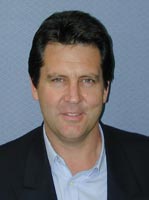
Overview
Gary Jones
Chief Executive 2002-2005 (taken from Annual Report 2004-2005)
The CRC for Freshwater Ecology (CRCFE) set out in 1993, under the leadership of its Chairman John Langford and my predecessor Professor Peter Cullen, to help improve the health of Australia’s inland rivers and wetlands. As we close the doors of CRCFE and open those of the new eWater CRC, I am confident in saying that in its 12-year history the CRCFE has helped make a real difference to the effective management of the Australian water environment.
The CRCFE’s research activities in four states and the ACT have produced robust scientific knowledge and advice to help pave the road towards numerous and widespread policy developments and changed attitudes in river management. In particular, we have helped to elucidate and communicate the fundamental importance of ecological health in ensuring the long-term sustainable use of Australian rivers.
We have identified measures and indicators of river ‘health’, developed monitoring and assessment programs, and explored the factors causing a loss of ‘health’ in rivers, as well as ways of rehabilitating them. We have deepened the general understanding of freshwater ecosystems and their functional components, as well as contributing to the concept of the ‘healthy working river’ — a river that is providing adequately for both economic and ecological needs even though it is not in the same condition as the ‘natural’ river it was before European settlement.
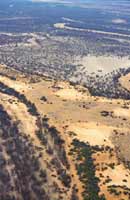
Environmental flows are now a central facet of the management of healthy working rivers, and we can trace CRCFE ‘footsteps’ through a progression of environmental flow initiatives over the last decade. Working with and through our state government partners, we have defined the ways in which river ecosystems respond to altered flow regimes. Consequently, we now have clear evidence that flow is a key driver of ecological condition and water quality in rivers and floodplain wetlands. Mind you, there is still much to learn, as it was not possible, even in 12 years, to study in detail the responses to flow of more than a comparatively small group of fish, plants and invertebrates as well as key water quality parameters.
Freshwater ecology must become a truly ‘predictive’ science if it is to continue to provide useful information for waterway managers and for the community in the new century. One of the central objectives of the new eWater CRC is to ensure that the individual ecological relationships quantified by CRCFE scientists are integrated into user-friendly, whole-of-river-system predictive models. We have much to learn from our CRC for Catchment Hydrology colleagues in this respect, and I am very optimistic that we will achieve this end, working together in the eWater CRC over the next seven years.

Biological methods for measuring water quality have become a practical tool for scientists and managers alike during the life of CRCFE. We have developed and applied biological assessment methods based on fish, algae, macroinvertebrates and rates of key ecological processes. Of these, macroinvertebrate methods have been the most widely applied so far, via the ‘AUSRIVAS’ method for river assessment, which the CRCFE helped develop as part of the National River Health Program.
The CRCFE’s work in Australia mirrored a world-wide trend throughout the 1990s moving from a reliance on chemical measurements to define river condition, to a broader approach that includes the health and condition of plants and animals that live in rivers and wetlands, and direct measurements of important ecosystem processes such as photosynthesis and respiration.
CRCFE staff have also been integral to the writing of the revised national water quality and water-quality monitoring guidelines. And the Murray-Darling Basin Commission’s Sustainable Rivers Audit is based on conceptual frameworks the CRCFE helped develop.

Throughout its life, the CRCFE has studied the ecology of all kinds of rivers and waterbodies across a wide range of geographic and climatic zones — from the cool, temperate rivers of southern Victoria to the tropical and arid zone rivers of Queensland and the Northern Territory. Especially in the highly flow-variable rivers of the arid zone we now know that it is very important to protect not only habitats that organisms use under normal conditions, but also refuge habitats — such as billabongs, waterholes and river-bed pools — that can outlast long dry periods. Without these refuge habitats, freshwater biodiversity is less likely to be maintained throughout climatic extremes, especially during prolonged drought.
Our scientists have also shown that in helping to rehabilitate degraded rivers, it is not enough just to restore habitats and refuges. Organisms will not necessarily reoccupy their former habitats if factors undermining ecological condition, from upstream or elsewhere in the catchment (such as poor flow regime or water quality) are still active.
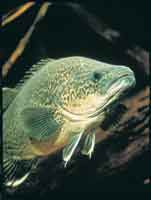
Measuring biodiversity has been just as important for us as protecting it. Via the Murray-Darling Freshwater Research Centre (MDFRC), the CRCFE has developed around 50 taxonomic identification (ID) guides to numerous invertebrates and larval fish. At the same time, researchers at Griffith University have adopted molecular genetic approaches in their taxonomic studies and already that research is providing valuable advice for the management of waterways and in particular for projects where inter-basin water transfers or re-colonisation by rare and endangered species are being contemplated.
Fish researchers in the CRCFE have demonstrated the valuable outcomes obtained from the construction of proper fishways in rivers of the Murray-Darling Basin and along the east coast, monitored and reported on threatened fish species, and developed habitat rehabilitation strategies for those and other fish species. Also there is now far better understanding of carp control, factors affecting the numbers of fish in a river and their migrations (or not), predator–prey relationships in fish refuges, and the factors such as salinity and cold water pollution affecting the recruitment process in native fish species.

CRCFE Mk I (1993–1998) had a major research program on the ecology and control of toxic algal (cyanobacterial) blooms. The Chaffey Dam study led by CSIRO and MDFRC was one of the first very detailed studies of the efficacy of artificial mixing to control algal blooms in Australia. Similar work on the Murrumbidgee River found that flow could potentially be manipulated to minimise temperature stratification in weir pools and, hence, reduce the frequency and severity of blooms.
Understanding of the ecology and pathways to restoration in urban waterways has been greatly advanced during the life of CRCFE. Rigorous studies in Melbourne’s streams have clarified the factors that lead to ecological decline of urban streams, showing that it is run-off from impermeable surfaces that are directly connected to the streams by drainage pipes or channels that causes the ecological damage, largely via the frequent inputs of stormwater, coming even from small rain events. A quantitative relationship has been developed between this ‘effective imperviousness’ of the urban catchment and the waterway ecological health. This is proving to be a powerful tool for urban planners and managers. It provides clear direction on the way urban sub-divisions and drainage networks can be designed to meet their intended task (flood control) while improving the health of urban streams, previously considered ‘basket cases’ by many, ecologists included!
This pioneering work by staff of both the CRCFE and the CRC for Catchment Hydrology at Monash University, follows the strong leadership already given in urban water rehabilitation by the CRCFE in ACT; for example, guidelines for integrated land and water management, and stormwater pollution control via wetlands and ponds.
We have been fortunate to have a number of high-profile freshwater ecologists leading teams within the CRCFE, and they have also played important roles on influential advisory committees and expert panels across the water industry. Their influence on the industry has been supported by the CRC structure, through which our scientists have been able to exchange information directly with partner agencies and authorities who are the day-to-day managers and controllers of inland waterways across eastern Australia.
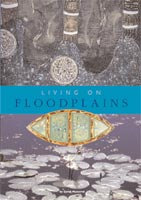
We have also at all times encouraged our researchers to communicate our science and learnings to members of the public and to regional communities potentially affected by changes to river operations and management. The CRCFE’s Knowledge Exchange program has boosted the effectiveness of that interaction even further. Since Peter Cullen initiated the program, knowledge brokers have been stationed in Albury-Wodonga, Mildura, Goondiwindi, Adelaide, Sydney, Melbourne and Canberra, where they have been on-the-spot contacts, collecting information from their local scientists as an input to management solutions being developed locally and elsewhere. Knowledge brokers are scientists with a penchant for communications and for seeing the adoption of scientific knowledge by the water industry and the public. In taking on the role, they leave the day to day life of a scientific researcher behind, but can bring those skills and experiences to a broader communications and outreach job. Importantly we have ensured they learn and acquire the skills needed to have the right conversation with both industry practitioners and scientific researchers, brokering productive interaction between people in previously separate fields of work. Without doubt, significant management outcomes have followed, and other organisations in Australia have taken up the knowledge broker concept initiated by the CRCFE.
Additionally, we have, in recent years, adopted a policy of ‘advice not advocacy’ in matters relating to the input of science to public debates on water resources management. It is my strong view that, as a taxpayer-funded organisation, we must fairly undertake and represent science in the interests of the entire Australian community, not just sub-sections of it.
The CRCFE’s education, training and community-based activities have contributed to increasing awareness of the trade-offs required for healthy working rivers. Freshwater schools, training courses — both face-to-face and online — and workshops for management personnel have helped to spread the messages arising from our research. We have also helped to train almost 100 post-graduate students in freshwater ecology, and many of them are now in water management agencies around the country and overseas. We have augmented traditional academic training, provided to students by our university partners, with short courses in project management, public speaking, and media communications. We have also encouraged students to work in multi-disciplinary, cross-agency research teams so they are exposed to the practical realities of river and waterway management from early in their careers. Consequently, our students have remained in high demand by water industry employers throughout the life of the CRC and many are now working with water resources management agencies across Australia. I can say that this is a big and important change from my days as a young postgraduate where the thought of taking up a job in a government management authority was the last thing on my mind!
2005 has also been a time to celebrate the contributions of key members of staff to the success of the CRC. At the final Annual Meeting of the CRC for Freshwater Ecology in June 2005, I was pleased to present special CRC awards to:
- David Crook, Alistar Robertson and Alison King (also a student) for Best Published Paper with a CRCFE Postgraduate Student as Lead Author;
- Paul Humphries, Alison King and John Koehn for Best Published Paper with a CRCFE Scientist as Lead Author;
- Chris Walsh and colleagues for Best Multidisciplinary Team Research Project;
- Rhonda Sinclair for Best Support Person; and
- Richard Norris and Ian Prosser for Best Knowledge Exchange Activity or Project
All these awards covered achievements over the 12-year life of the CRC and all the awardees should be very proud of the work for which they have been recognised. (Indeed, over its life the CRCFE’s staff have published approximately 610 refereed journal papers, 180 books and book chapters, and 420 technical and consultancy reports.)
Special ‘Life-time’ Achievement Awards were also presented to Peter Cullen, Barry Hart, Ben Gawne and John Langford, in recognition of their outstanding contributions to the CRCFE.
A cooperative research centre could not be a success without the expertise, knowledge, cooperative spirit and drive that are found in all its staff. I would like to thank all our researchers, our valued industry personnel, our team leaders, our knowledge brokers, our vital support staff, and the members of the Board for all their contributions over the last 12 years. And special thanks to the University of Canberra for its financial and practical support for the CRC headquarters and office of the Chief Executive throughout the CRC’s life.
Finally, I would like to personally thank two people who have been central to the success of the CRCFE: former Chief Executive, Peter Cullen; and John Langford, the CRCFE’s one and only Chairman.
Forward — to the eWater CRC!
Some of the award recipients:
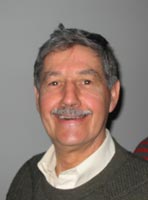 |
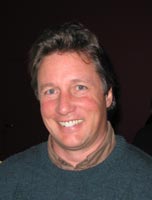 |
 |
 |
| Barry Hart |
Ben Gawne |
Chris Walsh |
Ian Prosser |
 |
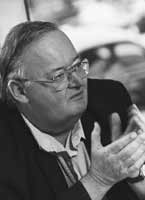 |
 |
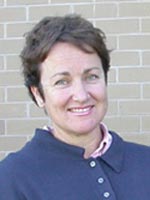 |
| John Langford |
Peter Cullen |
Richard Norris |
Rhonda Sinclair |